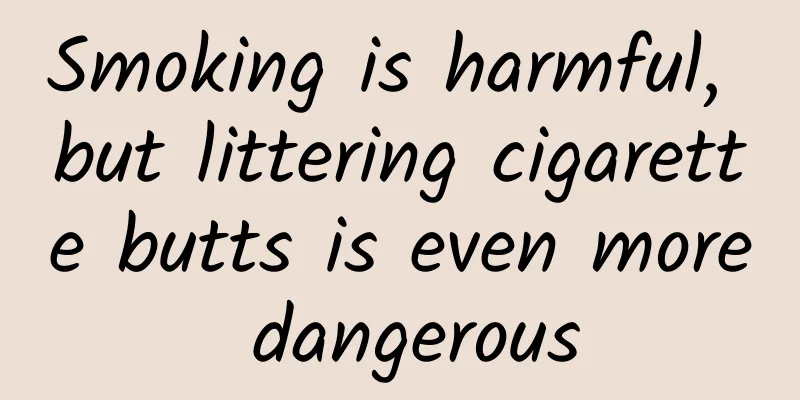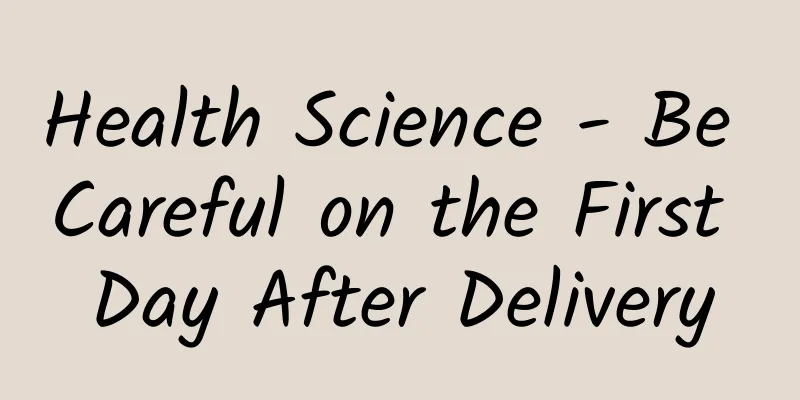Smoking is harmful, but littering cigarette butts is even more dangerous

|
This is the 5265th article of Da Yi Xiao Hu Recently, the well-known actor Zhang Ruoyun became a hot topic because of a casual action. Unfortunately, this time it was a bad example. Because of this negative teaching material behavior, the actor publicly apologized on his personal Weibo, saying: "I am sorry for setting a wrong example! I will correct my mistakes, strictly regulate my own behavior, and accept everyone's supervision and criticism." The controversial action of throwing cigarette butts everywhere on the bus has sparked heated discussions among netizens, with some people thinking it is just a small matter and others thinking it is very serious. From the perspective of safety and health, everyone has different opinions. 1. Hazards of smoking in public places The act of smoking while moving in public places is called "wandering smoke", which is a type of secondhand smoke that the public often encounters. Studies have shown that tobacco smoke contains 7,000 chemical components, hundreds of which are harmful substances and 69 are carcinogens [1]. Pollutants produced by burning cigarette butts include carbon monoxide, nicotine and other alkaloids, amines, nitriles, alcohols, phenols, alkanes, aldehydes, nitrogen oxides, polycyclic aromatic hydrocarbons, heterocyclic compounds, hydroxyl compounds, heavy metal elements, organic pesticides, etc., covering a wide range. They have multiple biological effects and cause various harms to the human body [2]. When smokers are in motion, their breathing speed is faster than when they are at rest, and the alveolar ventilation function is accelerated, making it easier for the inhaled harmful substances to enter the alveoli and circulate into the blood. People around them are exposed to secondhand smoke, so people exposed to "wandering smoke" smoke also have health risks, especially for pregnant women, children, etc. [2]. Tobacco smoke pollutes both indoor and outdoor environments and is the main source of indoor PM2.5. It remains a source of diffuse and persistent toxic substances long after the cigarette has been extinguished [3]. Smoking cessation doctors advise the public: Don’t smoke walking cigarettes and don’t be a walking source of pollution. 2. Unextinguished cigarette butts are the unknown starting point of fire Cigarette butts are the most easily overlooked fire source. Their surface temperature can reach 200-300℃, and the core temperature can even reach 700-800℃. Ordinary objects can be easily ignited, such as paper, which has a burning point of only 130℃, cloth, which has a burning point of 200℃, and wood, which has a burning point of 250℃. In daily life, it only takes 3 to 7 minutes for a cigarette butt to ignite cotton wool, and it even takes less than 60 seconds for acrylic fabric to catch fire [4]. "Smoldering" generally refers to the phenomenon of slow burning without an open flame. Since smoldering has no flames, it is concealed. Fire accidents caused by cigarette butts are generally formed after a period of smoldering. If the remaining cigarette butts are not extinguished, they will slowly burn without an open flame for 1-4 minutes. The process is extremely concealed. If there is a strong wind, there is sufficient oxygen, and when it comes into contact with flammable items such as cotton and wood chips, it can directly turn into an open flame [5]. According to the fire data of the National Fire Rescue Bureau, there were 107,000 fires caused by smoking in 2023, accounting for 12% of the total number of fires in the year. From January to October 2024, 1,559 people died and 2,202 people were injured in fires across the country [6]. 3. Cigarette butts are an unknown source of environmental pollution Globally, the weight of waste generated by the entire tobacco life cycle is about 25 million tons per year. Trillions of non-biodegradable filter butts are discarded into the environment every year, and those that can be recycled are also burned or landfilled in the natural environment [7]. Unrecycled cigarette butts appear on the streets, by the water, and even in the sea, becoming one of the sources of non-degradable microplastic pollution in the environment [8]. It has caused damage to soil microorganisms and marine life. People have found cigarette butts in the stomachs of many marine organisms and birds. Cigarette butt fragments have been found in 70% of seabirds and 30% of sea turtles worldwide [9]. Researchers have even detected "microplastic particles" of 5-10μm in size in the placenta of healthy pregnant women. This is the first time scientists have found microplastics in the human placenta. [10] People often say: Do not neglect a small act of kindness, and do not commit a small act of evil. Small matters such as smoking and cigarette butts should also be taken seriously. We should actively quit smoking and not leave any hidden dangers to our health and life. Smoke-free Shanghai, smoke-free China, and smoke-free world. References: [1] Wang Chen, Xiao Dan, Chi Hui. Summary of “China Smoking Health Report 2020”[J]. Chinese Journal of Circulation, 2021, 36(10): 937-952. [2] Shi Guochao, Wang Xiongbiao, Ding Yuan. Smoking Cessation Guidance Manual [M]. Shanghai: Shanghai Science and Technology Press, 2021.8 [3] How tobacco harms the lung health of people around the world[J]. Chinese Journal of Chronic Disease Prevention and Control, 2019, 27(07): 506. [4] Small cigarette butts have great power[J]. Hunan Safety and Disaster Prevention, 2020, (11):62. [5] Wang Ning. Research on the Reform of Fire Accident Investigation in my country[D]. Chongqing University, 2005. [6] https://mp.weixin.qq.com/s/FGW6YIxyQpATlCMqpc3urg [7] Hu Dan. Tobacco and the environment: How to realize the right to a clean, healthy and sustainable environment. Biodiversity Conservation and Green Development. Baijia. April 14, 2023. ISSN 2749-9065 [8] Chen Mengling, Gao Fei, Wang Xinyuan, Wei Yifan, Xu Qiang, Liu Chunsheng. Distribution, ecological effects and carrier role of microplastics in the ocean[J]. Marine Science, 2021, 45(12): 125-141. [9] 2020 China Marine Ecological Environment Bulletin (Excerpt)[J]. Environmental Protection, 2021, 49(12): 59-75. DOI: 10.14026/j.cnki.0253-9705.2021.12.013. [10] Ragusa A, Svelato A, Santacroce C, et al. Plasticenta: First evidence of microplastics in human placenta[J]. Environment International, 146. DOI: 10.1016/j.envint.2020.106274. Author: Putuo District Central Hospital Department of Respiratory Medicine Shi Zhaowen, deputy chief physician |
<<: Are you at high risk for breast cancer?
>>: How to solve the problem of overuse of antibiotics? We want to find an alternative
Recommend
What is the cause of itchy small bumps on the vulva?
The pace of life for modern people is getting fas...
What is the cause of increased leucorrhea and odor?
The condition of female friends' leucorrhea c...
Can leeks reduce milk production? The truth is this
Because leeks have the effect of reducing milk pr...
How to eliminate the foreign body sensation in pregnant women's throats
Although all pregnant mothers enjoy the same trea...
Diagram of the location of the uterus in the abdomen during pregnancy
From the beginning of life, the combination of sp...
Can I eat ham during menstruation?
Every adult woman will experience menstruation. T...
Small particles on the labia
Under normal circumstances, small particles will ...
Pain in left lower abdomen at 7 months of pregnancy
Abdominal pain after pregnancy does not necessari...
What is the correct way to remove eye makeup?
For some young women nowadays, they prefer to put...
I am three months pregnant and always worried about the fetus stopping
The third month of pregnancy is the early stage o...
What to do if your finger joints hurt during pregnancy
Various physical conditions of pregnant women dur...
What to do if you have third degree uterine prolapse
In the 21st century, with the extremely fast pace...
What are the harms of sleeping late to women?
Most women love beauty and pay attention to their...
What are the dangers of wearing contact lenses for a long time? When is it not suitable to wear contact lenses?
In recent years, many women who love beauty have ...
How to count the days of pregnancy
Many women tend to forget the time of their pregn...









